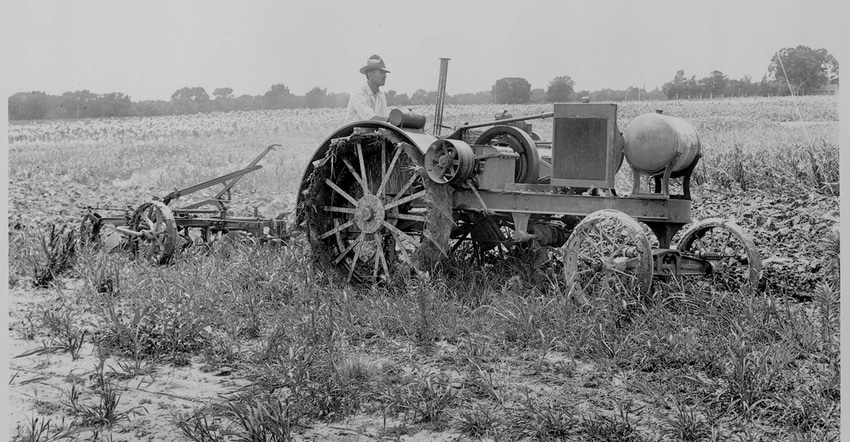February 22, 2018

A Waterloo Boy tractor will greet visitors to the “American Enterprise” exhibition at the Smithsonian's National Museum of American History starting today.
The display of the green, yellow and red 1918 Waterloo Boy tractor marks the 100th anniversary of Deere and Company's entry into the tractor market with the acquisition of the Waterloo Gasoline Engine Co. in 1918. This display will highlight the introduction of light-weight gasoline-powered tractors, a major revolution in agriculture that moved farming firmly into the realm of commercial production.
The Smithsonian is marking 2018 as the Year of the Tractor with the Waterloo Boy display and “Precision Farming,” which opened Jan. 19.
Waterloo Boy
The Waterloo Boy will be showcased with historic images and advertisements that marketed the then-new technology to help convince farmers to shift from animal power and labor-intensive production to gasoline-powered tractors. In the mid-1900s, nearly 100 manufacturers were in the tractor market. By the 1930s, only two major companies dominated: Deere and International Harvester. The display invites the public to consider the uncertainty inherent in adopting new inventions and the considerations that go into investing in machinery versus staying with traditional methods. Over time, farmers modernized their rural operations by seeking the efficiency, economy of scale and use of machines typical of urban factories. One image displayed behind the 100-year-old tractor provides a glimpse into the future of farming—a drone flying over a Kansas corn field.
Precision Farming
The "Precision Farming" case tells a more modern story of how farmers have adapted to technology—even the use of drones—that is changing agricultural practices in fundamental ways. In the late 1990s, location-tracking technology, such as GPS, helped launch a different agriculture revolution. U.S. farmers began using this technology to "see" bigger variations within their fields and livestock. Information has become the "new crop of the 21st century" as farmers rely on data on soil types, harvest yields for precise locations, moisture content measurement, animal management, and recording the effect of weeds, pests, and diseases.
Key objects on display in "Precision Farming" include a GPS receiver; a crop yield monitor from 1996 that allowed farmers to precisely steer their equipment and pinpoint which areas of a field are most productive; a cow neck tag with a Radio Frequency Identification transponder from the 1980s; and a grain sickle from around the 1900s used to harvest crops. The display includes four stories of farmers engaged in precision farming.
Additional offerings
"Pairing the story of the introduction of the gasoline tractor with the kinds of tools and technology that today's farmers are using, allows our audiences to understand how agricultural practices have evolved over 100 years," said Peter Liebhold, the museum's agriculture curator and a co-curator of the "American Enterprise" exhibition. "GPS and computer technology is allowing farmers to see and manage their fields in fundamentally new ways."
The museum will also incorporate tractor history, agriculture and innovation programming into its offerings for the public, including within Wegmans Wonderplace, which is designed for children up to age six. Ag-history programs will include "Harvest for the Table: Wheat to Flour," the "Ask a Farmer" program, talkback boards and related chef and cookbook author presentations.
"American Enterprise" is a permanent exhibition that opened July 1, 2015, and chronicles the interaction of capitalism and democracy that resulted in the continual remaking of American business. For more information on the exhibition and the "Precision Farming" case, visit: http://americanhistory.si.edu/american-enterprise-exhibition.
Source: Smithsonian's National Museum of American History
You May Also Like




